DREEAM Digital Learning Education Team has invested in Augmented Reality (AR) technology with Microsoft HoloLens 2 (Microsoft AR glasses) that will enhance the Learner experience and bring education into the 21st century.
DREEAM can deliver virtual simulation using the Microsoft AR glasses. Simulation-based medical education and immersive learning education are carried out using the applications available on the GigXR platform; enabling us to deliver hybrid simulation with holoLens goggles - combining physical and virtual environments.
Work Experience students experience treating HoloPatients (Software with GIGXR) for the first time with the HoloLens at DREEAM.
Augmented Reality
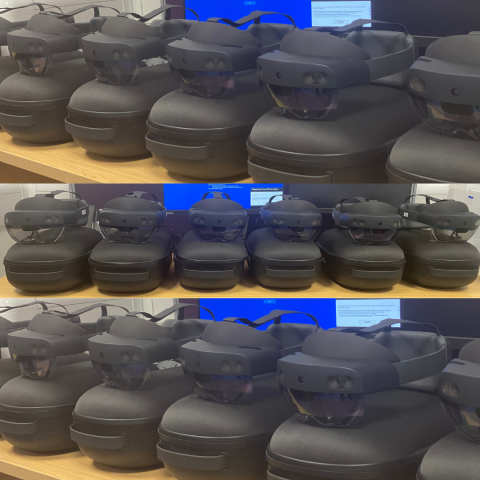
Augmented reality (AR) often referred to as Mixed Reality (MR) is different from Virtual Reality (VR).
Augmented Reality refers to a set of mobile digital technologies that allow a three-dimensional computer-generated model in the form of a hologram to be overlaid on a real environment. This technology (microsoft ar glasses) can be used to ‘create’ simulated patients to learn in an Immersive Learning Environment (ILE). With the use of hololens goggles, simulated patients (manikins) can be ‘brought to life in physical classroom environment. The learners can have the opportunity to interact with the Holo-patient in close proximity thereby bypassing the restrictions of the real clinical environment with all the risks involved, particularly during a pandemic outbreak. The learner gets the advantage of an immersive experience using the hololens goggles and this bridges the virtual and real-world, supplements reality, and have the potential to redefine how student/learners interact with the clinical/teaching environment.
‘Most MR devices use a headset such as Google Glasses, Hololens goggles or the Microsoft AR glasses that projects a hologram into the users’ physical environment. The HoloLens device is controlled by hand gestures in the air, using swiping or pinching movements like those made on an iPad or smartphone, or with voice commands. With the headset on, the learner can see the patient, hear real sounds from the patient and see objective data/ vital signs that can aid clinical reasoning. AR/MR devices are better tolerated than totally immersive Virtual Reality (VR) devices. AR/MR (such as the Microsoft HoloLens 2) is connected to the network over Wi-Fi rather than tethered to a PC. This enables increased mobility and application in almost any clinical and educational setting.
The Hololens goggles will expand the scope of traditional teaching and learning by bringing extended reality into the clinical training setting. The use of simulated HoloPatients that can be visualised via a Microsoft AR glasses will provide our healthcare professional students and trainees with opportunities for educational and engaging simulation activities.
Immersive Learning Fellow at DREEAM describes use of the newer technology HoloLens (AR Device) in comparison to the popular Virtual reality goggles.
HoloLens in Healthcare
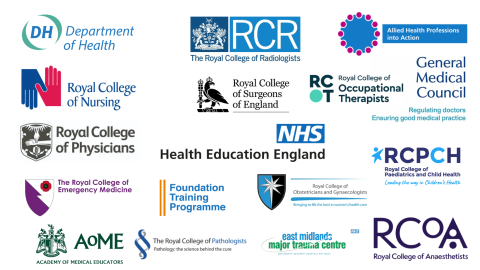
HoloLens utility in Simulation Based Medical Education.
Simulation has always been employed to cover a wide ranging aspect of the learning objectives in various curricula particularly in emergency department at post graduate and undergraduate level. In a busy environment like the Emergency Department, where bedside teaching is not always possible, the learning objectives can be met through the Immersive Learning Simulation microsoft AR glasses
DREEAM has been using the GIGXR platform with hololens goggles- Holopatient to educate final year medical student, nurses at induction, work place experience student and Allied health professionals.
For example, ILS is used to meet the knowledge, skills and behavior domain objectives of the Royal college of Emergency Medicine August 2015 curriculum. The syllabus covers common competencies like decision making and clinical reasoning (CC5) for all levels of trainees and this can be learnt through safe simulation with the ILS. Some of the ACCS major presentations’ learning objectives stated in syllabus including (but not limited to) Anaphylaxis (CMP1), the septic patient (CMP4), the shocked patient (CMP5) and the unconscious patient (CMP6) can be covered using the HoloPatient simulated experience with microsoft AR glasses.
Other curricula do benefit from something similar with their respective syllabus. The undergraduate level curriculum in the ‘ACE Study guidebook’ has lot of cases that the student may not encounter bedside, hence the ILS is used to meet these objectives.
Furthermore, the new RCEM curriculum has a more pragmatic approach that will help prevent the ‘tick box’ approach and the Speciality Learning Outcomes (SLOs) stated in this curriculum can also be taught and learnt using the ILS.
The hololens goggles can be put to use in health in various other settings as highlighted below.
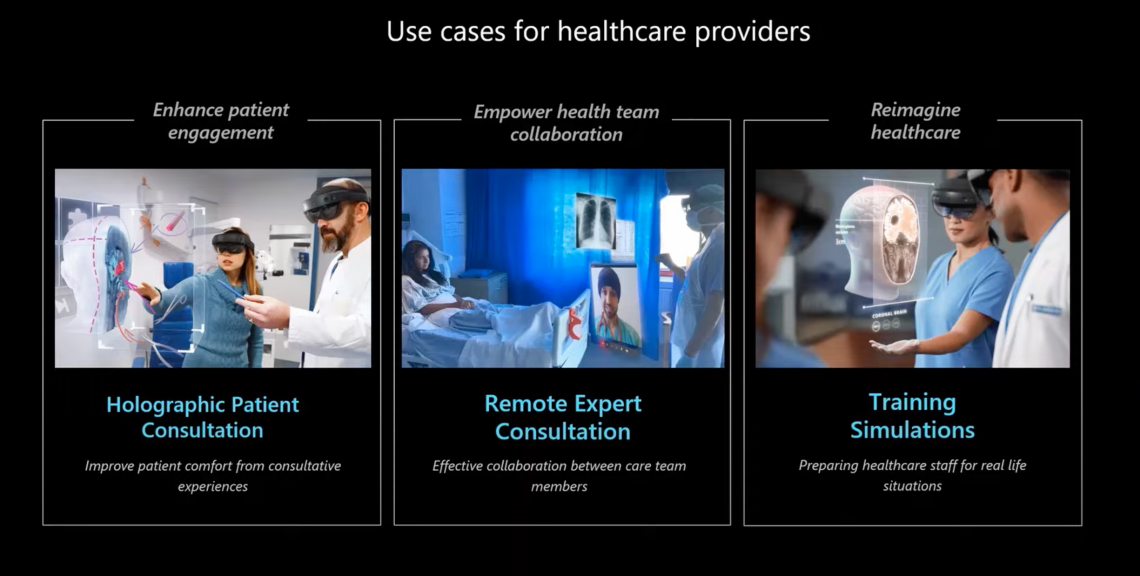
See examples of video link to use cases available:
1. Anywhere to anywhere for operations – US to Uganda
https://customers.microsoft.com/en-us/story/f6b7c250-d9b2-4659-8dbf-a44055a8286c?preview=1
2. Medical device training in – Israel
3. Hospital remote ward round – UK
4. Service Provider to Care home – UK
Immersive Learning

Immersive Learning Simulation Using HoloPatient for Medical Simulation
Our inter-professional group teaching has received a great boost from using the HoloPatient and anatomy models in a joint expanded virtual training and learning experience. Medical Students and Nursing students can ‘shadow’ the clinicians as they care for these simulated patient models in a safe and non-intimidating space.
The trainee ACPs, Clinical Support Workers (Nursing Assistants) and Emergency Department Practitioners (EDA) can make use of anatomy models to gain a better understanding of human anatomy and clinical interpretation of vital signs.
Vid: Immersive Learning Education with Mixed Reality:Immersive Learning Fellow - Dr Stephen Ojo describes the use of the HoloLens in Undergraduate Teaching in a session called FILMS- Friday Immersive Learning Simulation. ( 4mins)
Benefits in NHS
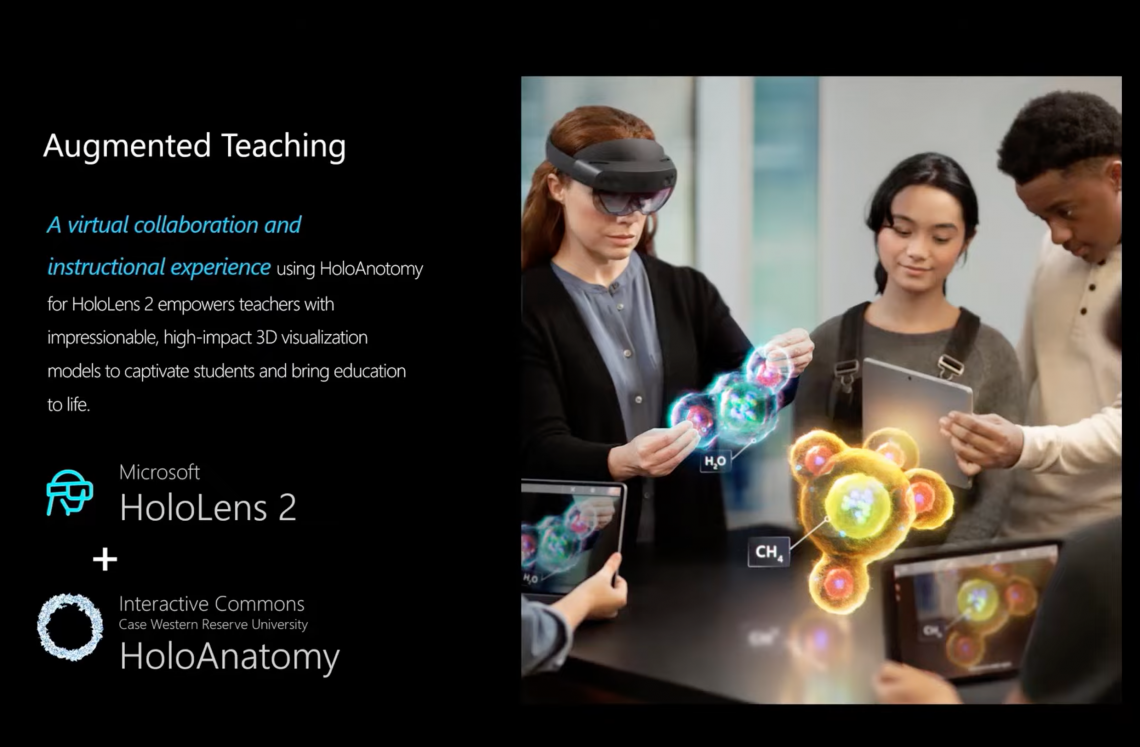
NHS benefits from HoloLens use in Medical Device Training.
We host and facilitate the regional teaching to trainees from other NHS Trust and medical groups (medicine and nursing) and also deliver instruction and learning to medical students of the University of Nottingham. A significant aspect of the student’s syllabus can be taught by simulation in a more immersed environment which can be close enough to the reality they will later experience on their clinical rotation. Trainees from other trusts can access the skills required in the timely assessment of critically unwell patients. Our new large cohort of International Medical Graduates who have not had any clinical experience in this country will benefit immensely from exploring various conditions in a safe and non-threatening environment without the challenges they may face at the bedside. All trainees have individual needs, and DREEAM can use the ILS to deliver a bespoke syllabus with the specific learning objective to meet the demand of a large group of trainees across several trusts. Mixed reality provides an intuitive and enjoyable way of learning for today’s digital natives. One pertinent advantage is that teaching and learning can be provided remotely to the trainees in situations where there are challenges of self-isolation as we have faced during the pandemic.
Photo: Transforming Healthcare Delivery with Mixed Reality.
Youtube.com. https://www.youtube.com/watch?v=52InDICzTcs
Patient Care
HoloLens2.0 Improves Patient Care
In our current post-Covid world, access to clinical simulation labs is limited, and patient actors are not allowed into our clinical areas. The Immersive Learning Simulation will ensure that high-quality training is still happening regularly (including remotely). Learning in a safe environment with a model as close to reality as possible will remove the burden that is sometimes placed on the patient at the bedside when they are critically unwell. We hope that this will help us respect the preferences of our patients of not wanting trainees at the bedside for discussion. Moreover, the behaviours that are taught and learnt will improve the culture, communication and collaboration amongst all clinicians, enhancing patient-centred care. Improved clinical reasoning amongst students, trainees, and clinicians creates an opportunity to manage our patient's symptoms better. Immersive Learning Simulation will improve patients' experience overall.
DREEAM can use the Immersive Learning Simulation to enhance inter-professional education (IPE), during which learners can provide patient care in a virtual collaborative team environment. This joint work will improve the quality of patient care, decrease patients' length of stay, and reduce medical errors. Inter-professional learning (IPL) has been shown to create teams that better work together and improve the patient experience. Immersive Learning Simulation can provide many opportunities for Inter-Professional Learning.
DREEAM Courses ( Hybrid)
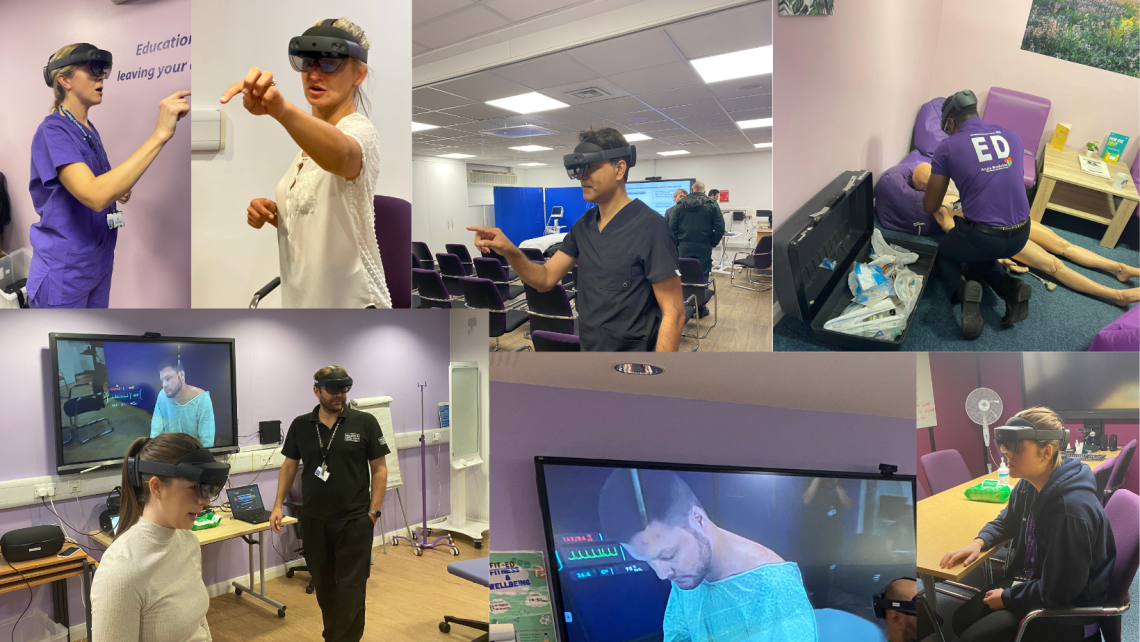
Immersive Learning with HoloLens in Hybrid Simulation
The Immersive Learning Simulation is not for a single event or course, and there are no fixed numbers of places/individuals. DREEAM will use the Immersive Learning Simulation to support continuous education across various multidisciplinary groups on an ongoing basis. It can be adapted over time to deliver the syllabus of different curriculums. The licenses are renewable annually, and the accounts are transferrable from one learner to another.
Immersive Learning appears more efficient than mannequins and in scenarios not suitable for delivery by our simulated patients. It can also be used in almost any location and does not require any unique resources, preparation, rooms or additional personnel to use.